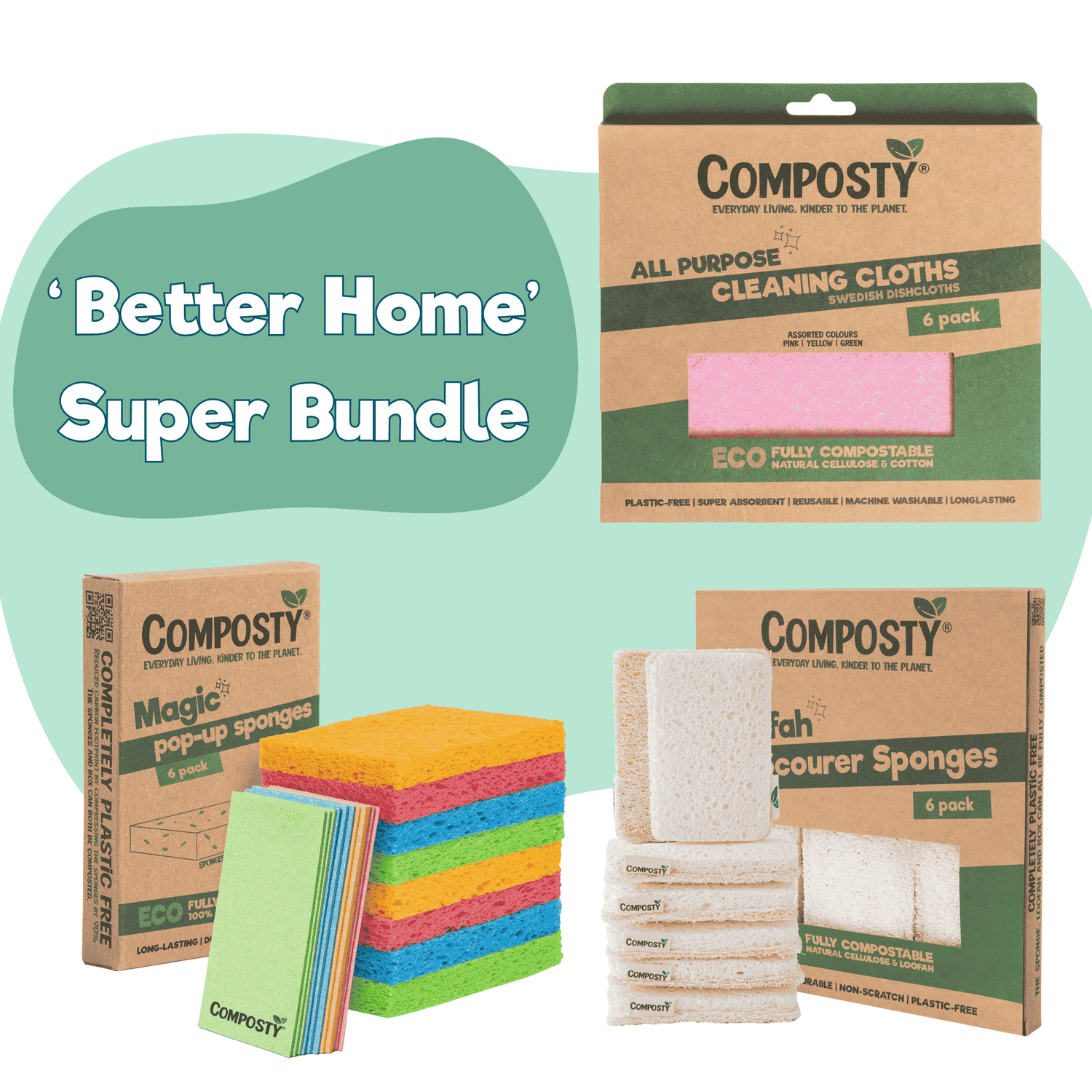
Beginner's Guide to Composting: Simple Tips for Starting and Maintaining a Healthy Compost Bin
Composting is a simple and sustainable way to reduce waste and create nutrient-rich soil for your garden.
However, starting a compost bin can be overwhelming for beginners.
That's why we've put together this beginner's guide to composting, to help you get started with confidence.
Step 1: Set up your compost bin
Firstly, choose a suitable spot for your compost bin. It should be in a shady area that's easily accessible for adding waste and turning the compost. If you don't want to purchase a compost bin, you can make your own using a wooden pallet, wire mesh, or even an old trash can with holes drilled into it.
Step 2: Add the right materials to your compost bin
You can add lots of different things to your compost bin, but it's best to keep things simple to start with. Once you master it, then try more materials.
When adding materials to your compost bin, it's important to include a mix of green and brown waste. This balance is necessary to keep the compost pile healthy and properly decomposing.
Green waste items include:
- Fruit and vegetable scraps
- Coffee grounds and tea leaves
- Grass clippings
- Fresh leaves
- Plant-based kitchen waste
- Fresh manure from herbivores
Brown waste items include:
- Sawdust and wood shavings
- Cardboard and newspaper
- Twigs and small branches
- Straw and hay
It's important to layer these materials like building a lasagne. Start with a layer of brown waste at the bottom, then add a layer of green waste on top. Repeat this layering process until your bin is full, making sure to water each layer as you go.
Remember to avoid adding any meat, dairy, or oily foods to your compost bin, as these can attract unwanted pests and slow down the composting process.
By following these simple guidelines, you'll be well on your way to creating a nutrient-rich compost for your garden and reducing your household waste.
Step 3: Layer your compost bin
To create healthy and nutrient-rich soil, it's important to layer your compost bin with a mix of brown and green waste. Start with a layer of brown waste, then add a layer of green waste, and continue layering until your compost bin is full.
Think of it like building a lasagne – layering the ingredients in the correct order will ensure a successful outcome. The brown waste provides carbon for your compost, while the green waste provides nitrogen.
Step 4: Maintain your compost bin
To maintain your compost bin, it's important to regularly turn it to mix the layers and provide oxygen to the microorganisms breaking down the waste. You can use a garden fork or a compost aerator to turn your compost.
It's also important to keep your compost bin moist but not waterlogged. If your compost bin is too dry, add water, and if it's too wet, add more brown waste to balance it out.
Step 5: Harvest your compost
After several months of adding waste and turning your compost bin, you'll start to notice that your compost has turned into a rich, dark brown soil-like substance. This means it's ready to use in your garden!
Simply remove the finished compost from the bottom of your compost bin, leaving the top layers to continue breaking down. You can use your compost to enrich soil, fertilize plants, and improve soil structure.
By following these simple steps, you can create nutrient-rich soil for your garden while reducing waste. Composting is an easy and rewarding way to make a positive impact on the environment, and it all starts with a simple compost bin in your backyard.

